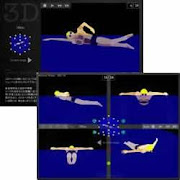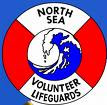 Dan Martin is undergoing training in England for his audacious, awe-inspiring, beyond-imagination, Herculean Global Triathlon.
Dan Martin is undergoing training in England for his audacious, awe-inspiring, beyond-imagination, Herculean Global Triathlon.Dan will start and finish in New York City, but in between, he will swim across the Atlantic Ocean, cycle to Asia and run across the North American continent.
 We were shocked to hear his unprecedented adventure and had the pleasure to interview him. His humble nature, his level of commitment and his detailed logistical planning impressed us as few others have.
We were shocked to hear his unprecedented adventure and had the pleasure to interview him. His humble nature, his level of commitment and his detailed logistical planning impressed us as few others have. Here is what Dan said from his training base in England:
Q1: If you get in trouble in the middle of the Atlantic, what safety precautions do you have?
Dan: Trouble is going to take many forms in the Atlantic. My main concern is the cold. I’m quite good with the cold and have built up body fats to help me, but the persistent exposure is going to bring problems. To counter these, I’ll be making sure I get my nutrition right - to keep the fire burning! I’ll have a boat alongside me with fully qualified first aiders with knowledge of the early signs of hyperthermia.
The things most people are concerned about are the sharks and the jellyfish. For the sharks, I’ll be relying on the vigilance of my support crew and using several different shark repellents. I'll use the Shark shield and Shark Defense.
For the jellyfish, there isn’t a lot I can do. I can try and avoid them with help from the crew, but I’m just going to have to suffer some stings and get treatment on the boat for anything more severe than a rash. That said, I do have an irrational fear of jellyfish.
Q2: How large is your escort boat and approximately how much fuel are you taking?
Dan: It’s a fifty foot steel yacht called Ice Maiden, but this may change if a sponsor comes onboard. We’ll be taking about 7000 gallons of fuel with the possibility of a re-supply on top of that. The main drain on the fuel will be the rib that follows me at all times and the generator. The yacht itself will operate largely under sail. The rib is a small inflatable rubber boat like a Zodiac. I won't be using a shark cage due to the drag they create.
Q3: How far away from your escort boat will you swim?
Dan: The main boat will drift while I’m swimming and only come catch me up for breaks. I’ll have a smaller rib that will follow me the whole way staying a few metres from me.
Q4: Will a smaller boat or kayak be positioned next to you?
Dan: Yes.
Q5: We heard you will swim for 3 hours, then rest for 2 hours and continue like that throughout the daytime hours. Is that true?
Dan: The plan is to swim for eight hours each day, swimming for three hours and then having an hour break before dropping back in for another three hours, then another break and two more hours.
Q6: Approximately how many hours do you plan to swim on average throughout your swim leg?
Dan: Roughly 8 hours a day-more if we’re in a strong bit of current and less obviously if there are storms lashing in.
Q7: Approximately how many kilometers do you hope to swim on average throughout the swim leg?
Dan: The total distance if we get it right is about 5,000 kilometers. The average each day will vary depending on the strength of the current with full days varying from 30-80kilometers.
Q8: Do you plan to take any days off during the swim leg?
Dan: Yes, the plan is to take one day off every seven. However, this will all be arranged around the storm forecasts we receive. If I know there’s a storm coming up then I’ll push on for a few days and take a ‘rest’ during the storm. This will mean that most of the rest days won’t be very restful.
Q9: Are you taking any special medications or inoculations before the swim as a precaution?
Dan: No, not really. I take a bit of ginger (in the form of ginger biscuits) to help with circulation.
Q10: What is the name of your pilot and did he sign up to pilot you across in a heartbeat – or did it take a while for him/her to agree to accept this responsibility?
Dan: The captain's name is Guy Ellis. He’s an old school friend so it didn’t take long to persuade him. He’s a great guy and thoroughly professional-I trust him completely.
Q11: How many crew members will you have on your boat?
Dan: Four at the moment, but I’m looking for one or two more. Specifically, a masseuse and someone with IT/communications skills.
Q12: You will swim without a wetsuit? Why?
Dan: This seems to be a big issue and initially I was 100% set on wearing a wetsuit. I’m now against them as it’s not really swimming. It gives you such a big boost in speed that it’s similar to wearing fins. Swimming is trunks, goggles and a cap. It’s just the way it is. Having trained in all conditions for the past year I’ve realised how good the body is at adapting and am now fully confident that the wetsuit isn’t for me. They would help immensely with jellyfish but the most painful of stings are in areas not really covered by the wetsuit - the neck and face.
Q13: What currents will you be riding across the Atlantic when you are swimming, if any?
Dan: I’ll be trying to follow the Gulf Current for a large proportion of the swim. It’s quite strong off the coast of North America, but then peters out a bit mid Atlantic. With the prediction sevices and NOAA information, we should be able to stay in the current.
Q14: After you finish a swim, then rest/eat/sleep and then get back into the water, you will start at the exact point where you got out the previous swim. If there is a current, will your escort boat simply anchor or will it have to travel backwards to your next starting point? Won’t that be frustrating?
Dan: Yeah, we’re going to be GPS marking the spot that I touch the boat and sailing back the next day. It will be frustrating, but I hoping that the crew will sail it back in the early hours of the morning so I can simply concentrate on getting ready and getting on with the swim.
Q15: If the waves, swells and whitecaps are very high, what safety precautions will you take?
Dan: We’ll be loosely following the [English] Cannel swimming guidelines. The Channel swimming pilots rarely go out if anything higher than Force 4 is predicted. We’ll be monitoring the situation and will judge each day as it comes. I’m quite good in big seas. We’ll take the standard precautions of brightly colored cap and light sticks on my trunks and cap.
60 foot seas aren't out of the questions. By I'm good with big seas, I mean Force 5 and 6. Anything up to 7 or 8 feet isn't too bad. We shouldn't see any 60-foot seas as we'll use the predicitons and high tail out of there and come back after the storm has blown through.
Q16: This event is of a scale that is beyond human comprehension. How do you mentally tackle such an event?
Dan: If I let my mind wonder on to the enormity of the project, it’s overwhelming. I really try hard to focus on the building block - the days, the sessions, the times between feeds, the times between breaths, each stroke. This challenge is 90% mental and I’ve been working with a psychologist to get a mental tool box ready for when the going gets tough.
Q17: What is your goal time of actual swimming and your overall estimation of the time it will take you to complete this swim?
Dan: I think, with the right currents, it’s possible in 14 weeks but I’m planning for 16 and it could take as long as 20 weeks or more. There are so many variables that nailing down a specific time is impossible. Make no mistake though, I’m in this for the long run - it’s a big trip and the swim is just the first leg.
Q18: We understand that you crewed for Sylvain Estadieu from Cork this summer and he will repay the favor by crewing for you. How did you manage that?
Dan: I crewed for five different friends this summer and Sylvain mentioned he was keen to come with me and stepped up when I asked for people. He’s a great guy - really steady and dependable and being French I’m going to delegate all the cooking duties to him.
Q19: Will your swim be streamed online so we can watch your progress?
Dan: The plan at the moment is to send tweets everyday, upload blog posts with photos and short films every few days and upload a longer video every 10-14 days.
Incredible. Truly incredible.
Copyright © 2009 by World Open Water Swimming Association




















No comments:
Post a Comment